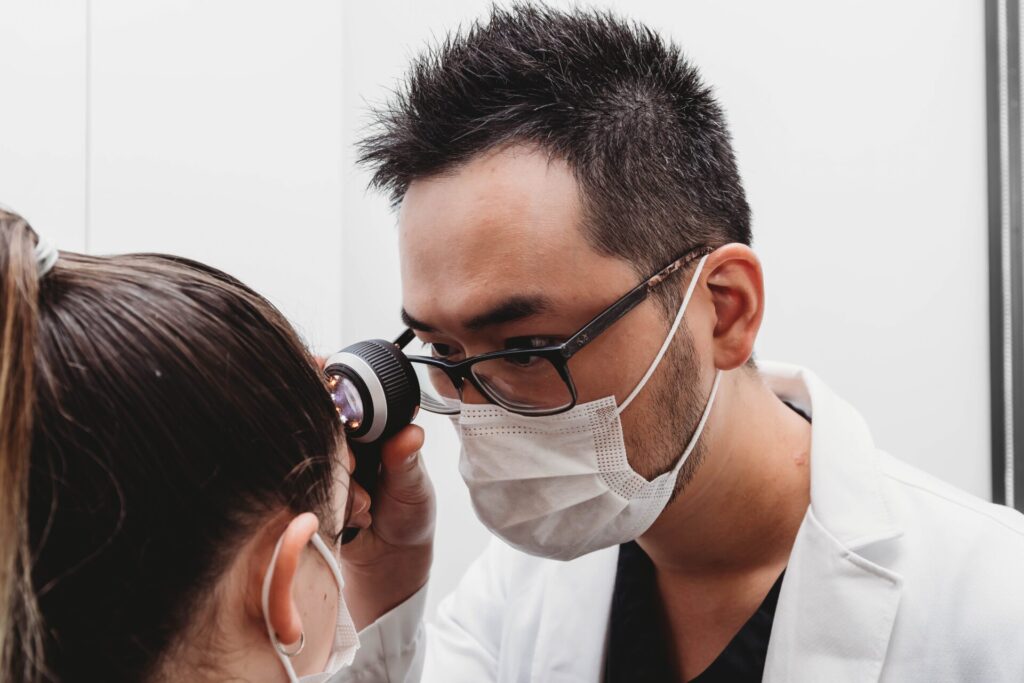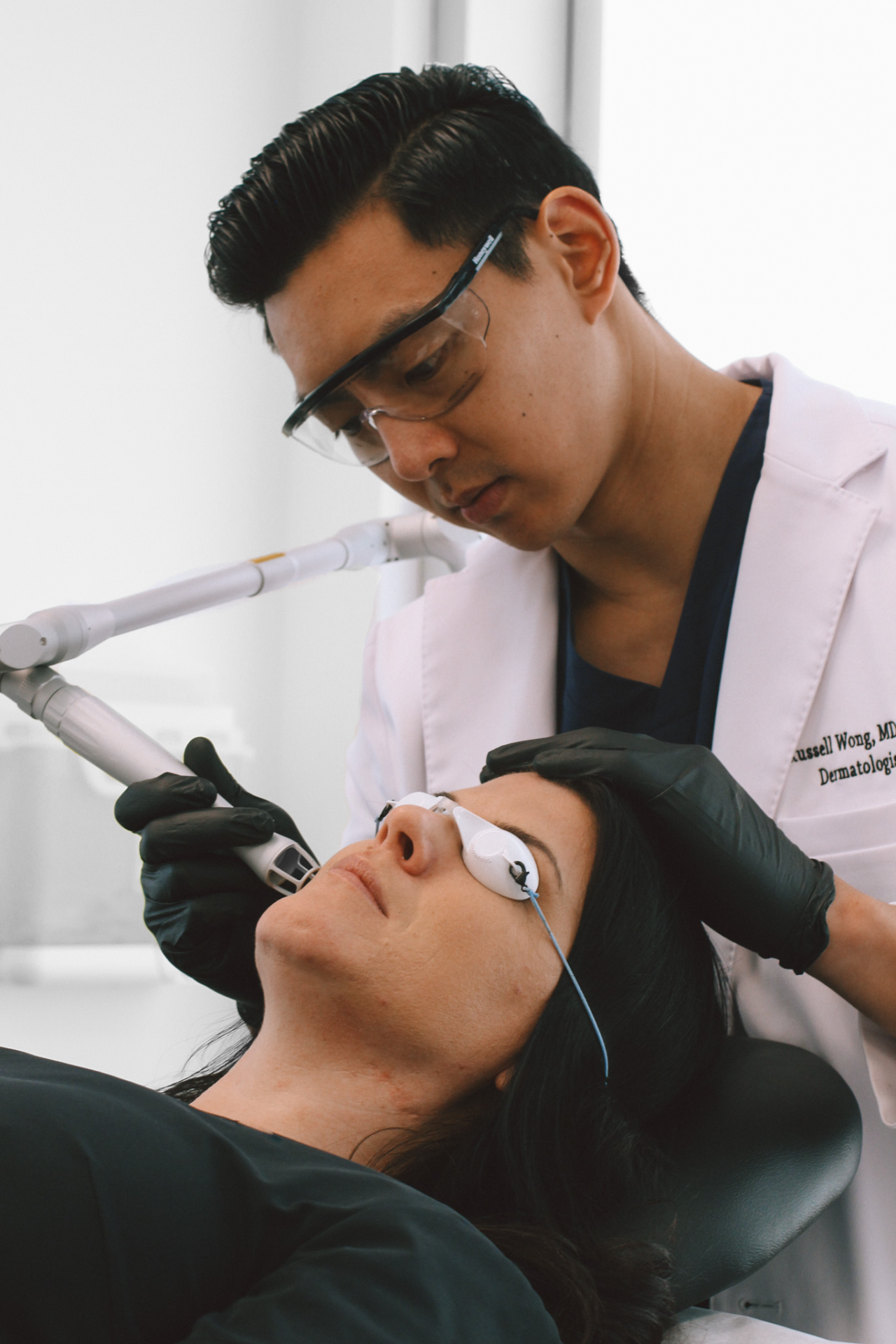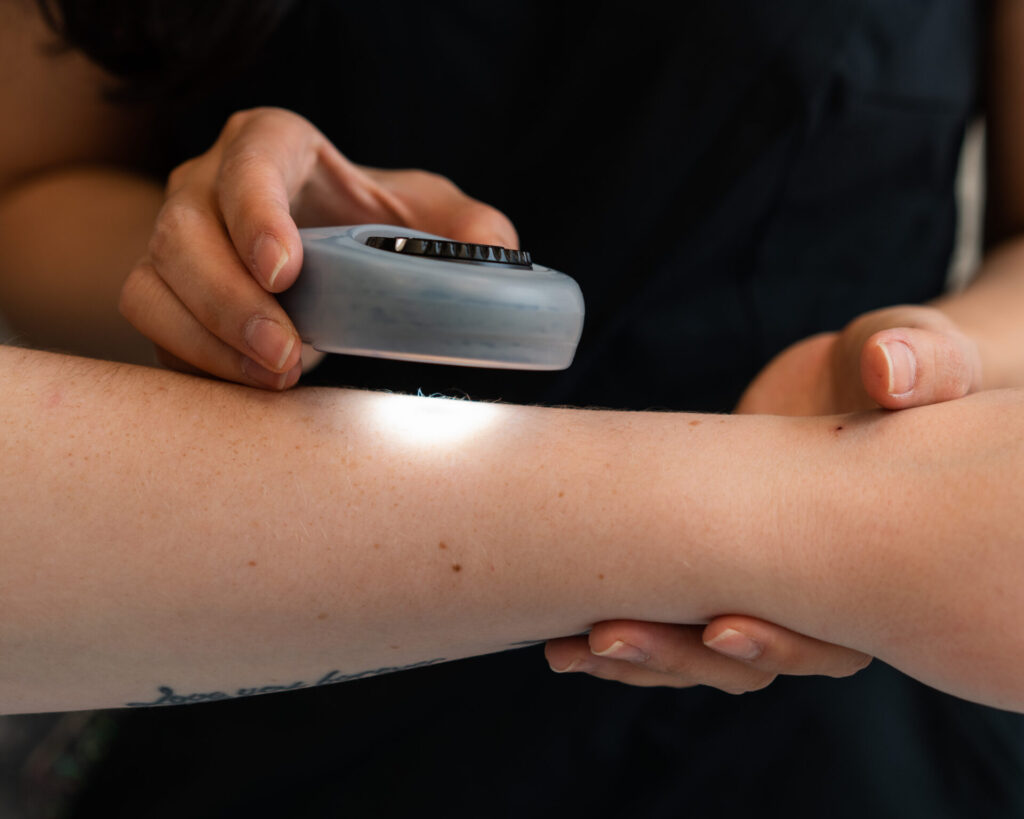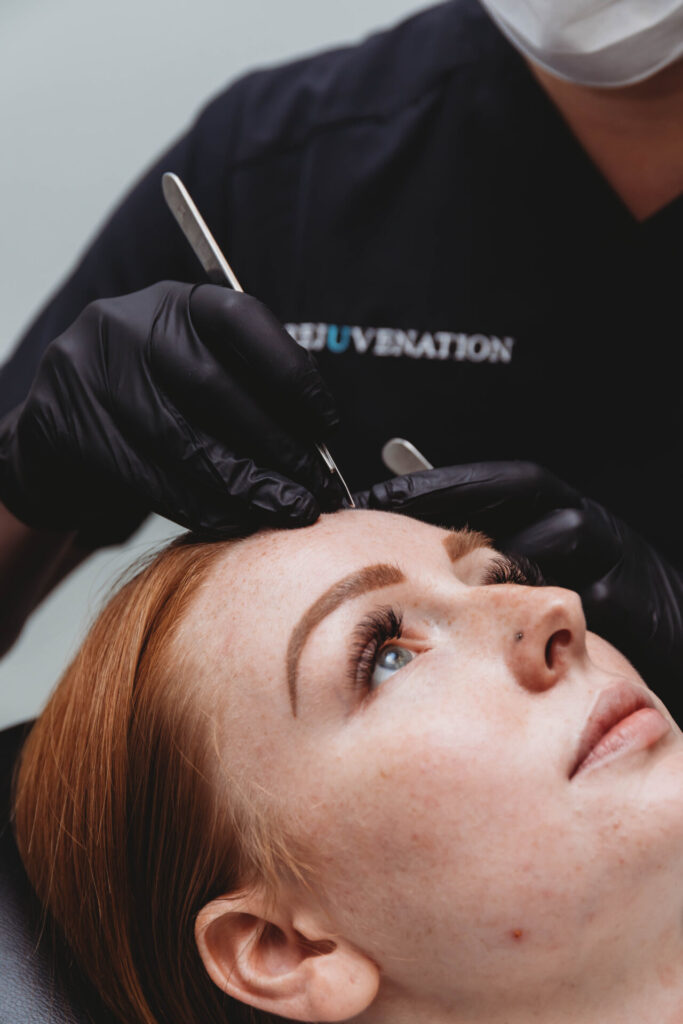Treatment of widespread actinic keratoses (AKs) and extensive photodamage is a challenge. One of the treatment options is laser therapy, whereby physicians have the option of using ablative lasers (CO2 and Erbium Yttrium Aluminium Garnet) or nonablative fractional laser systems. With ablative laser systems, the superficial layers of the skin are ablated, including epidermal and superficial dermal actinic damage. Re-epithelialization occurs from uninvolved skin and keratinocytes from follicles. When using a CO2 laser, additional cosmetic improvements are a result of removal and tightening of the photodamaged collagen in the superficial dermis. The most important risks of this treatment are scarring and dyspigmentation. These risks are lessened when using fractional lasers, which produce small columns of ablation or coagulation in the skin, leaving the surrounding skin intact. This treatment may be combined with topical agents. Existing evidence suggests that both ablative laser resurfacing and fractional laser treatments are effective in reducing AKs and photodamage. Although these treatment modalities are widely used and clinical experiences are positive, large comparative studies are remarkably scarce. Still, laser resurfacing has a place in the (field) treatment of widespread AKs and extensive photodamage.

Mohs Micrographic Surgery Fixed-Tissue Technique for Melanoma of the Nose
Mohs micrographic surgery, fixed-tissue technique, for excision of nasal melanoma provides three important benefits: 1) assurance of eradication of the main mass along with its “silent” contiguous outgrowths, 2) safe management of non-contiguous satellites too small to be visible initially, and 3) safe sparing of maximal amounts of surrounding normal tissues. These benefits are achieved because all incisions are through








